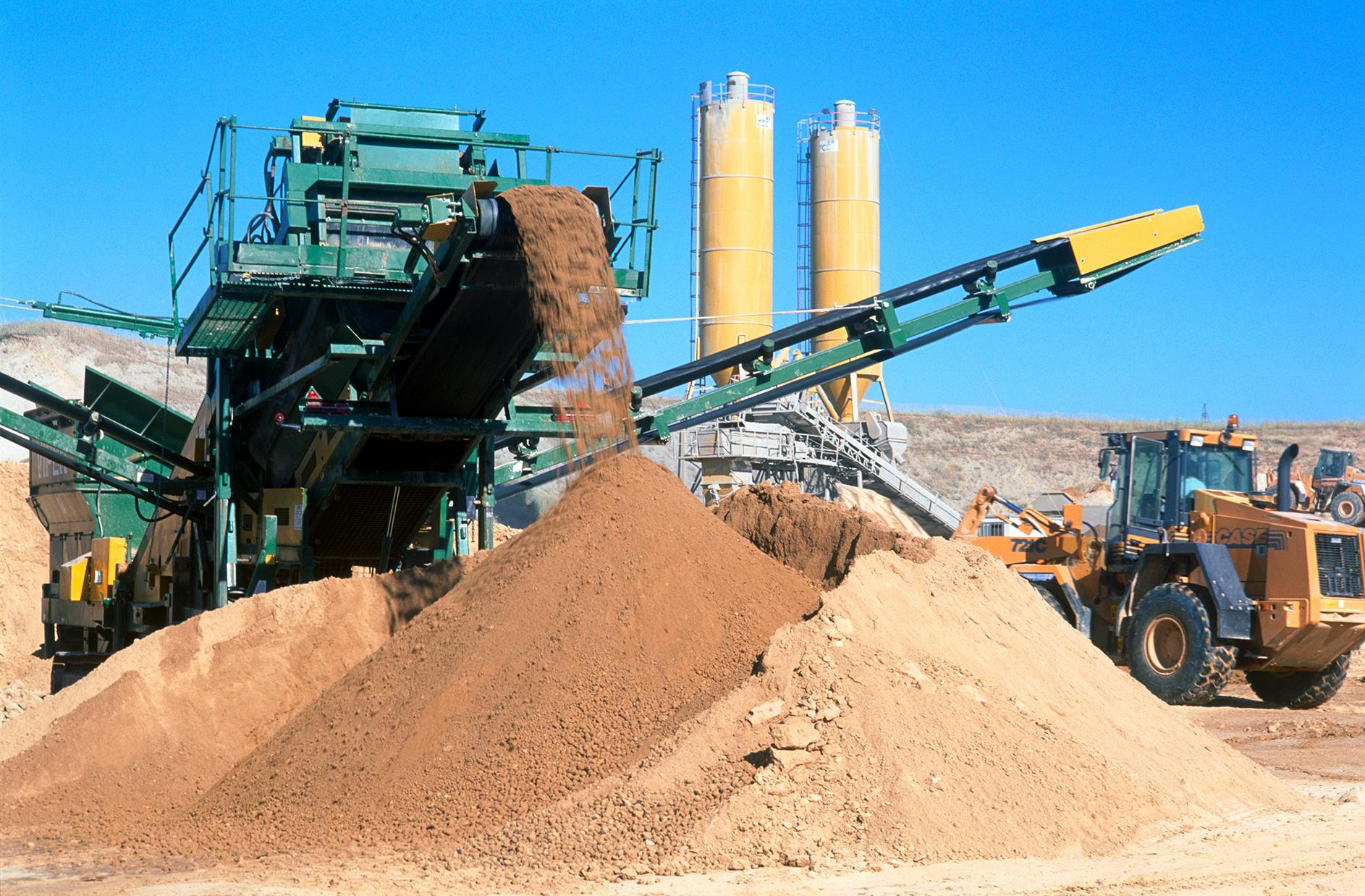We're addicted to something we didn’t even know we were using: sand. And now we’re starting to run out of it. The addiction began thousands of years ago, when civilizations began making glass and ceramics. Glassworking led to revolutionary technologies like the microscope, the telescope, and eyeglasses. Over time, more uses for sand were discovered. Reinforced concrete, made from water and cement that’s mixed with sand, gravel, and other aggregates and then reinforced with metal bars or mesh, allowed us to build 160-story skyscrapers, and asphalt let us create millions of miles of roadways. Sand is used to make glass and silicon for televisions, computers, and smartphones, and in hydraulic fracturing (“fracking”) by oil and gas drillers.
We use sand to make elastics in our clothing, as an anticaking additive in our food, and (as an ingredient in silicone) as a way to enlarge our breasts. It’s even dumped along coasts to expand land masses. All these innovations and constructions and conveniences require sand, lots and lots of sand. Coastal sand dunes, beaches, and riverbeds are all made from quartz. While quartz is one of Earth’s most abundant natural resources, it can take hundreds or even thousands of years of erosion to create sand from quartz.
The invention of reinforced concrete in the early 1900s made buildings more resistant to natural disasters and prompted a demand for sand that nobody could have predicted. Today, rapid urban population growth and the related global construction boom has created a massive demand for homes and buildings and infrastructure made of concrete. The number of people living in cities globally has risen from around 750 million in 1950 to around 4 billion today, according to the United Nations.
To accommodate the demand of a growing global population, about 50 billion tons of construction-grade sand is needed each year. As a result, the quartz sand supply is being depleted at an astonishing and unsustainable rate. Author Vince Beiser has written the authoritative book on sand, The World in a Grain, in which he describes not only how sand has transformed civilization, but also how our insatiable demand for it is affecting the environment.
Beiser says that urban developers in the United States dredged and mined sand from beaches, riverbeds, floodplains, and bays close to the cities they were building. In time, however, nearby natural habitats were decimated, local sand sources dwindled, and environmental regulations tightened, leading sand-mining companies to look abroad to meet the growing demand. Sand is now shipped vast distances to get to construction sites.
The sand shortage is sending prices ever higher. The price of gravel and sand has more than quintupled since 1978, according to the U.S. Bureau of Labor Statistics. The cost is passed on to consumers, including homeowners. Unsustainable sand mining and dredging practices destroy river and ocean ecosystems and generate pollution, and the process of making cement is itself a major greenhouse gas contributor, Beiser notes.
Instead of employing more sustainable mining practices, some mining companies take advantage of countries with less restrictive environmental laws, lackadaisical enforcement, and minimal community opposition. Demand for sand is so high in some countries that black markets have emerged.
Beiser says that a “not in my backyard” response can do a lot of harm when it comes to sand mining, and that activists should instead push for use of more sustainable mining methods so that companies don’t just move to places with fewer barriers to extraction.
Unfortunately, the sand that modern civilization demands so much of—coarse, water-swept sand from beaches, as opposed to smooth, wind-swept sand from deserts—is being dredged and mined at a far greater rate than it is naturally replenished.
While much of the world struggles to get enough quartz sand, other parts of the world are being inundated with desert sands.
Beiser writes that “at the same time that we’re running out of the sand we need, we’re generating more of the kind we don’t.”
In the ancient Saharan cities of Chinguetti in Mauritania and Araouane in Mali, sand from the desert is lifted by wind and settles atop streets and buildings. Such desertification is happening around the world.
Beiser describes the desertification he saw firsthand in Duolun County, southeast of the Gobi Desert, in Inner Mongolia. He explains that communities such as Duolun County are seeing underground aquifers depleted, native plants dying, and the topsoil blown away, leading to an ever-encroaching desert. Contributing factors include a growing population, over-farming, overgrazing, deforestation, and the water demands of industry.
Since 1978, China has planted tens of billions of trees in hopes of reversing the desert’s expansion. But researchers worry that trees—as opposed to native shrubs and grasses that have grown in the area for thousands of years—are depleting subterranean aquifers to such an extent that soon nothing will flourish in the area. It may take decades to see the long-term effects of afforestation efforts such as China’s project.
Confronted with colossal challenges such as the global sand shortage and the significant environmental impact of the cement-making industry, Beiser suggests that “the question is not how do we use less sand, but how do we use less of everything?”
Beiser says cities must adapt and build in ways that require less resources. “Let’s have more bikes and fewer cars,” he says. “If you reduce car ownership by 10 percent, that’s 10 percent of homes without a need for garages and driveways,” which require sand to build.
While the sand shortage may seem bleak, there are many people responding to this problem. Scientists at the Imperial College of London are testing a low-carbon, biodegradable alternative to concrete. Their product, called Finite, uses desert sands and other abundant fine powders that until now have not had any industrial use.
Another approach, by the Canadian company CarbonCure, is to reduce the construction industry’s carbon footprint by using carbon dioxide as an ingredient in the concrete-mixing process.
Students at MIT are experimenting with the use of shredded plastic to fortify concrete and therefore use less cement. Similarly, engineers at Brawijaya University in Malaysia are evaluating the use of bamboo fiber to reinforce concrete. Even coffee grounds are being tested as a possible replacement for sand in concrete by scientists at Swinburne University of Technology in Australia.
Japan's Shinagawa Incineration Plant is not only generating energy from trash, but also making a sand replacement material out of it. To minimize landfill use around Tokyo, trash is incinerated at high temperatures, in order to reduce toxic emissions. After hazardous materials are removed from the exhaust, the leftover ash is used in concrete as a substitute for clay in the production of cement and for sand in the production of concrete.
The price of sand isn’t likely to drop any time soon, so the world will increasingly need to consider alternative materials, sustainable mining practices, and possibly even collective consumer actions. Initiatives similar to Fair Trade Certified coffee or Forest Stewardship Council–certified forests would allow consumers to make informed decisions when it comes to purchasing sand, in whichever miraculous form it may take.










